Online shopping isn’t just about convenience anymore—it’s about connection. Consumers today don’t just want to see a product; they want to experience it.
Enter Augmented Reality (AR)—a technology that bridges the gap between digital browsing and real-world buying. From virtual try-ons to realistic product visualization, AR shopping experiences are revolutionizing how brands engage customers and how customers make confident purchase decisions.
For decision-makers in retail and eCommerce, AR in retail shopping isn’t just a tech add-on—it’s a strategic investment in customer trust, experience, and conversion.
Get the latest updates straight to your inbox.
By clicking sign up you'll receive occasional emails from imagine.io. You always have the choice to unsubscribe within every email you receive.
What is AR Shopping?
Augmented Reality (AR) shopping lets consumers interact with products digitally, using devices like smartphones, tablets, or AR-enabled headsets.
It brings products to life in ways that traditional images or videos cannot, allowing shoppers to explore, test, and visualize items in real time.
Whether it’s simulating the experience of walking through a physical store or placing a piece of furniture in a living room, AR in retail bridges the gap between imagination and reality.
In fashion and beauty, customers can see how clothing, accessories, or makeup look on them without trying them on physically. For home goods, AR shopping enables users to preview how furniture or décor fits within their space before making a purchase.
By enabling these interactive “try-before-you-buy” experiences, AR in retail shopping helps brands engage customers early in the decision-making process, reduce uncertainty, and create more confident, informed purchases.
These immersive experiences are now becoming one of the most impactful AR trends reshaping the future of online retail.
How AR Shopping Works
Augmented Reality (AR) is no longer a futuristic concept—it’s quietly reshaping how we discover, evaluate, and buy products. By blending the digital and physical worlds, AR shopping helps customers make faster, more confident decisions while giving brands the ability to create richer, more interactive experiences. Let’s break down how it works in practice.
1. Virtual Try-On
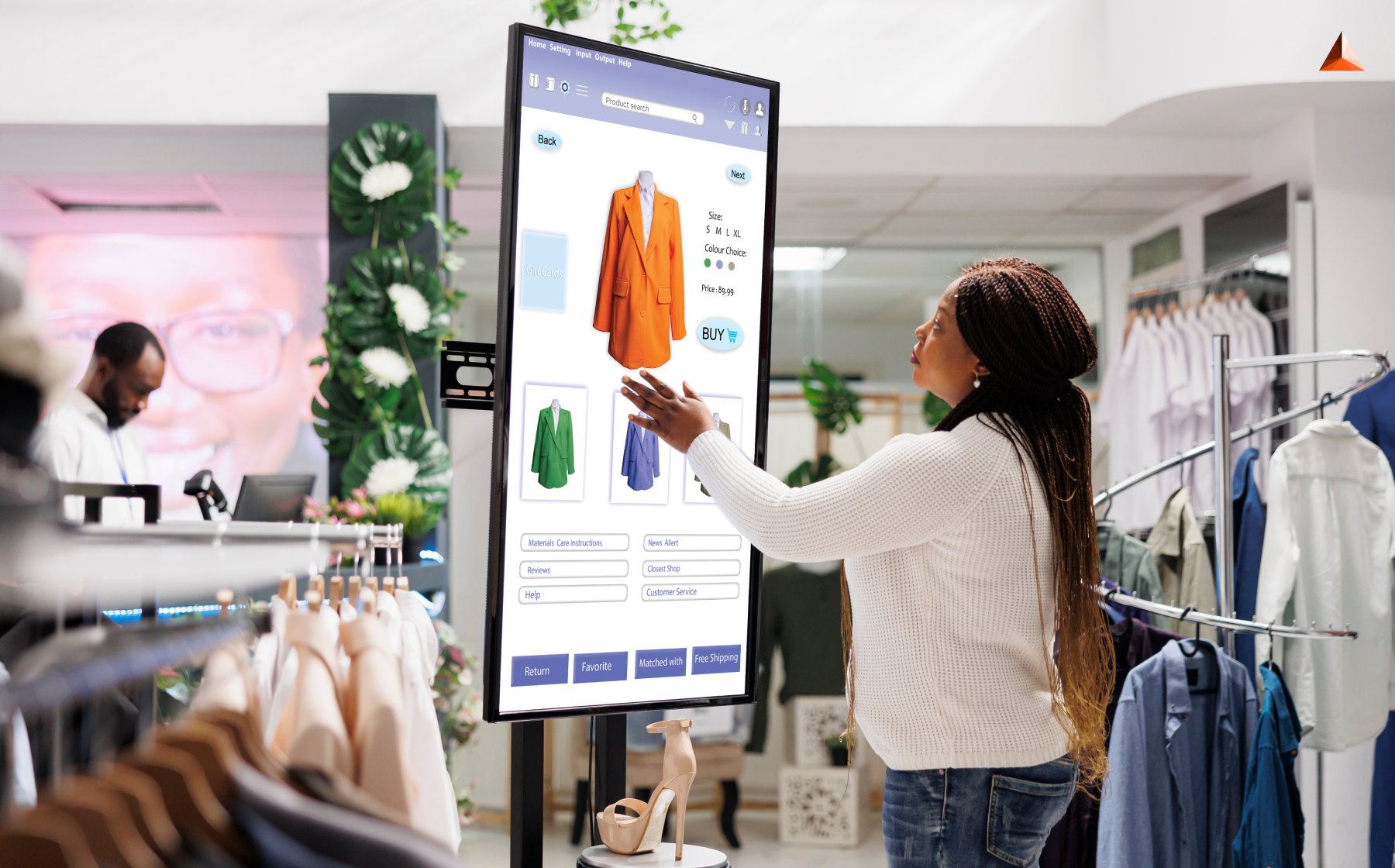
One of the most popular uses of AR is virtual try-on technology. With just a smartphone camera, shoppers can see how products look on them—whether it’s a pair of glasses, a lipstick shade, or an outfit.
Take Sephora’s Virtual Artist or Warby Parker’s Try-On app, for instance.
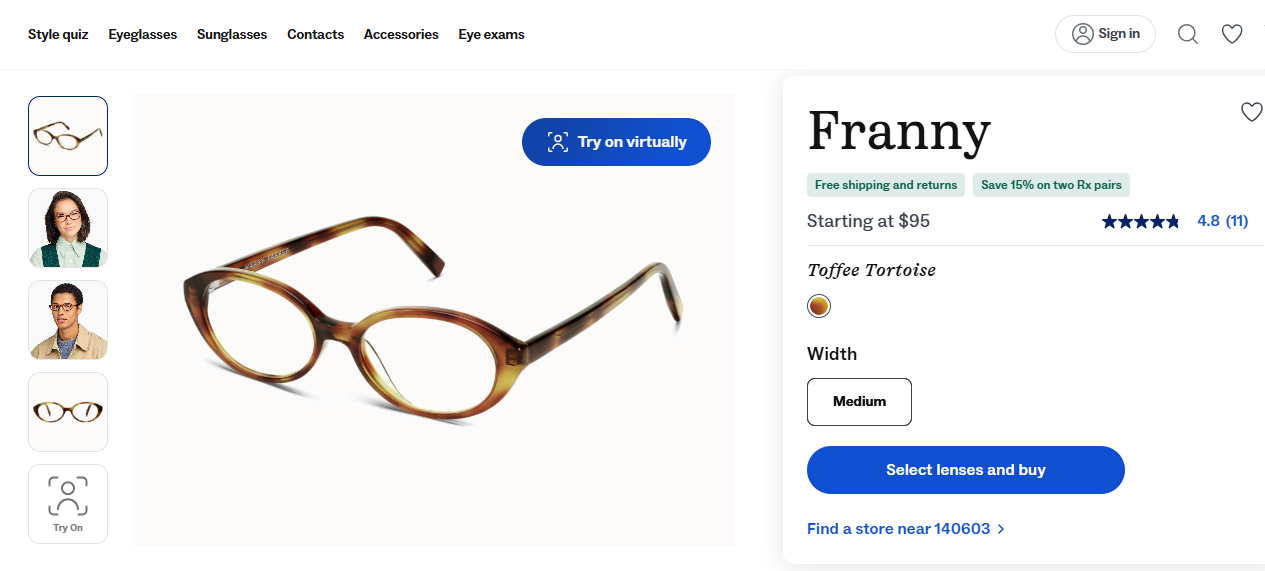
These tools allow customers to experiment with styles and colors from the comfort of home, reducing hesitation and making the buying process feel personal and fun. For brands, it means fewer abandoned carts and higher conversion rates because customers are more confident in their choices.
2. Product Placement
Another powerful application of AR in retail shopping is spatial product visualization. Instead of guessing whether a sofa fits a living room or if a lamp complements the décor, customers can use their phones to “place” a 3D version of the item in their actual space.
Apps like IKEA Place and Wayfair have mastered this—bridging the gap between imagination and reality. Shoppers can view products in true scale, walk around them, and even capture images for comparison. The result? Informed purchases, reduced returns, and a smoother overall shopping experience.
3. In-Store Navigation
AR isn’t confined to online shopping—it’s making waves inside physical stores too. With an AR-enabled app, customers can navigate aisles effortlessly, discover promotions, or access detailed product info just by scanning items.
For example, imagine walking into a large retail space and having your phone guide you directly to what you need—while highlighting personalized offers based on your shopping history.
It’s like having a digital concierge that turns every visit into a tailored experience. Retailers benefit, too, from improved traffic flow and higher in-store engagement.
4. Interactive Product Exploration
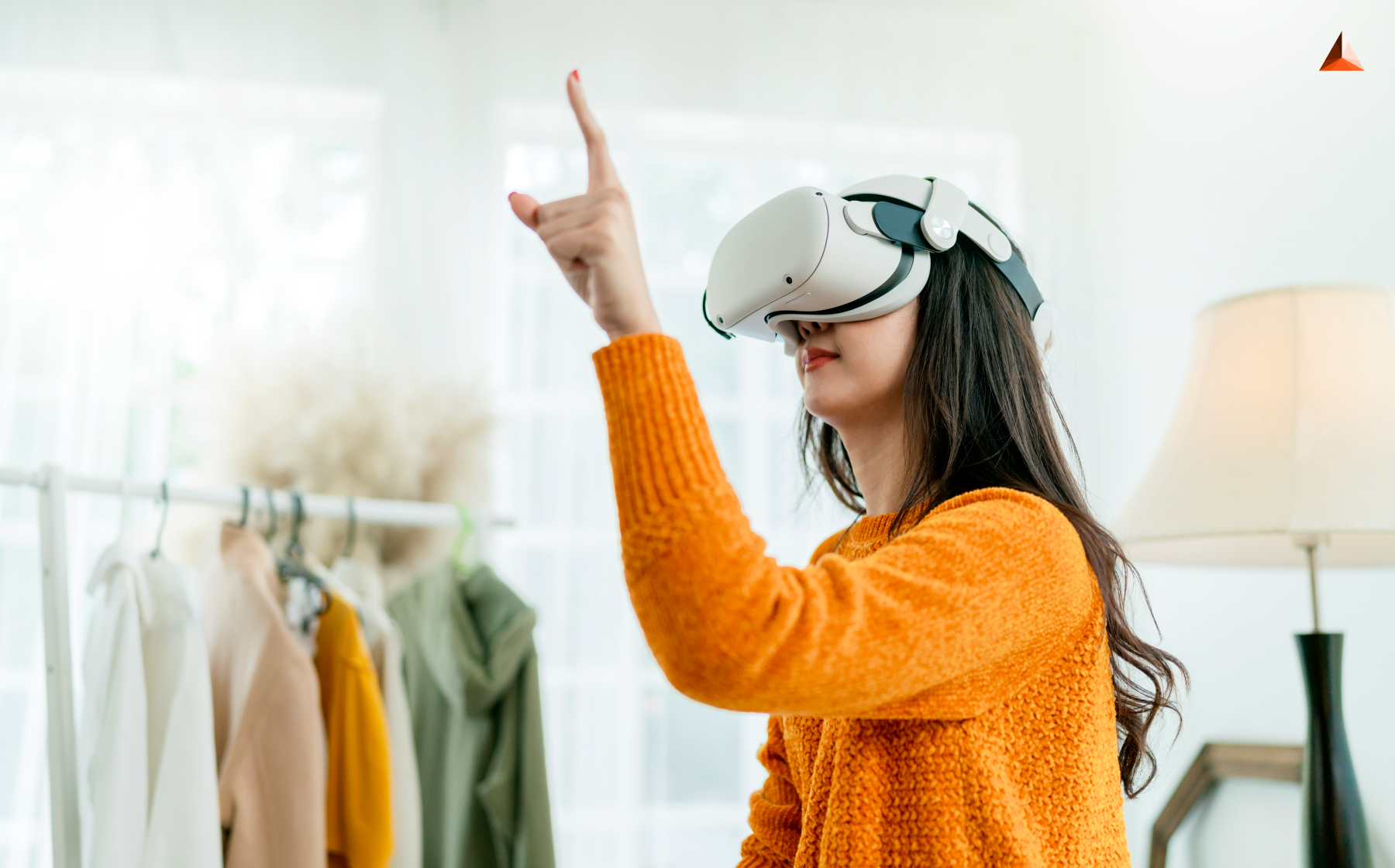
Static product photos are no longer enough to capture attention. AR allows customers to explore products in dynamic, interactive ways—rotating, zooming, or even disassembling digital models to understand how they work.
This level of immersion not only builds trust but also elevates how a brand is perceived. When customers can explore a product’s details freely, it feels premium, transparent, and cutting-edge.
That’s a major differentiator in competitive markets where visual storytelling drives purchase intent.
The Key Benefits of AR Shopping
AR doesn’t just enhance visuals—it transforms how people shop and how brands sell. The benefits span both sides of the experience.
For Consumers
- Increased Confidence: When shoppers can see how a product looks or fits in real life, their uncertainty drops. This sense of assurance is what turns “maybe later” into “add to cart.”
- Reduced Returns: High return rates are a major challenge for online retailers. AR helps close the gap between expectation and reality by letting customers see exactly how a product looks or fits before buying.
According to Mintel, 49% of UK online shoppers returned items in the past year, rising to 60% for those aged 16–34. AR can help lower these returns while boosting shopper confidence. - Enhanced Enjoyment: AR turns shopping from a task into an experience. It’s interactive, personalized, and often entertaining—something customers genuinely look forward to.
For Retailers and Brands
-
Higher Conversions: Studies show that AR users are up to 94% more likely to complete a purchase after interacting with a product in AR. That’s a measurable boost in ROI.
-
Stronger Brand Loyalty: Immersive experiences create emotional connections. Shoppers remember how your brand made them feel—and they return for that feeling.
-
Competitive Advantage: In a world still dominated by flat, 2D visuals, AR gives forward-thinking brands a head start. It signals innovation and builds credibility among tech-savvy buyers.
How AR is Transforming Online Shopping
AR isn’t just improving digital commerce—it’s rewriting its playbook. At its core, the AR-driven shopping experience follows a powerful formula:
Visualization → Confidence → Purchase
When customers can visualize products accurately—in scale, color, and context—they gain confidence. That confidence leads to faster purchase decisions and fewer regrets post-checkout.
-
Personalization at Scale
One of AR’s greatest strengths is its ability to personalize experiences at an individual level. Each interaction can be tailored to the user’s preferences, location, or past behavior.
A customer viewing a sofa can instantly see it in different fabrics, colors, or arrangements—all based on what they’ve previously liked. This kind of dynamic customization was once only possible through in-person sales; now, AR makes it scalable.
-
Data-Driven Insights
Every tap, rotation, or zoom within an AR interface reveals valuable insights. Brands can track what users explore most, which features grab attention, and what ultimately drives conversions. These behavioral insights can refine everything from product design to marketing strategy—creating a powerful feedback loop between brand and buyer.
Forward-thinking companies are already integrating AR shopping platforms like imagine.io to power these immersive experiences without the need for complex tech stacks or large production budgets.
With its AI-driven 3D visualization, virtual staging, and configurable AR tools, imagine.io helps businesses bring products to life—instantly and interactively—making high-quality AR experiences accessible to every brand, regardless of size or industry.
What Companies Lead in AR/VR Shopping Solutions?
Global brands are already proving how powerful AR can be when it comes to transforming online and in-store experiences. Here’s how some of the biggest names are leading the way:
-
IKEA: Bringing Furniture to Life

With its IKEA Place app, customers can use their phone cameras to visualize furniture in their own homes, true to scale. It eliminates guesswork around size, color, and fit—helping shoppers feel confident before they buy. This seamless blend of physical and digital shopping has made IKEA a pioneer in AR-powered retail.
-
Nike: Perfect Fit, Virtually

Nike Fit uses AR to scan users’ feet and recommend precise shoe sizes, ensuring comfort and reducing returns. The brand also offers virtual sneaker try-ons, letting customers see how new styles look instantly. Nike’s AR tools combine personalization, convenience, and excitement—turning shopping into an experience, not just a transaction.
-
Sephora: Beauty Meets Technology

The Sephora Virtual Artist app allows users to try on makeup virtually using AR facial mapping. Shoppers can experiment with colors, mix looks, and find the perfect match—no in-store testers needed. It’s fun, hygienic, and confidence-boosting, helping Sephora personalize the beauty journey for millions.
-
L’Oréal: Redefining Beauty Tech
After acquiring ModiFace, L’Oréal integrated AR across its global brands to let customers preview hair colors, skincare results, and cosmetics virtually. The company’s blend of AR and AI creates hyper-personalized experiences—both online and in physical stores—cementing its leadership in beauty innovation.
-
Amazon & Wayfair: Immersive Home Shopping
Amazon’s AR View lets users project 3D products—like appliances or décor—into their space to check scale and fit. Similarly, Wayfair’s View in Room 3D allows shoppers to digitally design their rooms with true-to-life furniture models. Both brands prove how AR can simplify complex purchase decisions and make visualization effortless.
The Future of AR-Powered Shopping Experiences
The augmented reality market within the retail sector was estimated at $2 billion in 2021 and is expected to surge to $61.3 billion by 2031, representing a remarkable compound annual growth rate of 41.4% between 2022 and 2031.
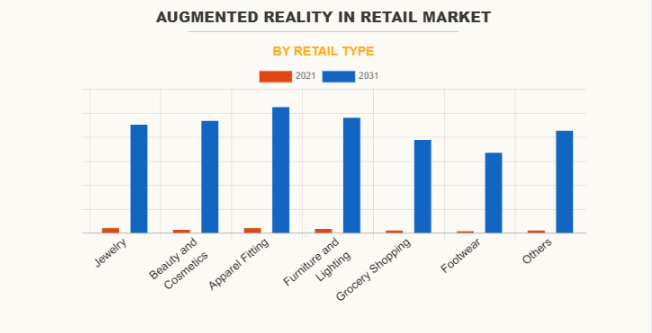
As consumer expectations evolve, AR will no longer be optional—it will be essential. We’re entering a phase where static images will feel outdated and 3D, AR-powered visuals will become the default for product storytelling. Brands that adopt AR today aren’t just innovating—they’re future-proofing their customer experience strategies.
Conclusion: Redefine Your Digital Storefront
AR is changing the way consumers shop, evaluate, and connect with products. For businesses, it’s not about technology—it’s about trust and transformation. Whether you’re a home décor brand visualizing spaces or an eCommerce leader enhancing buyer confidence, AR shopping can be your competitive edge.
At imagine.io, we make it simple to transform your product catalog into interactive, AR-powered experiences that drive engagement and sales. Talk to our experts today and see how your products can come alive with imagine.io’s 3D & AR visualization tools.
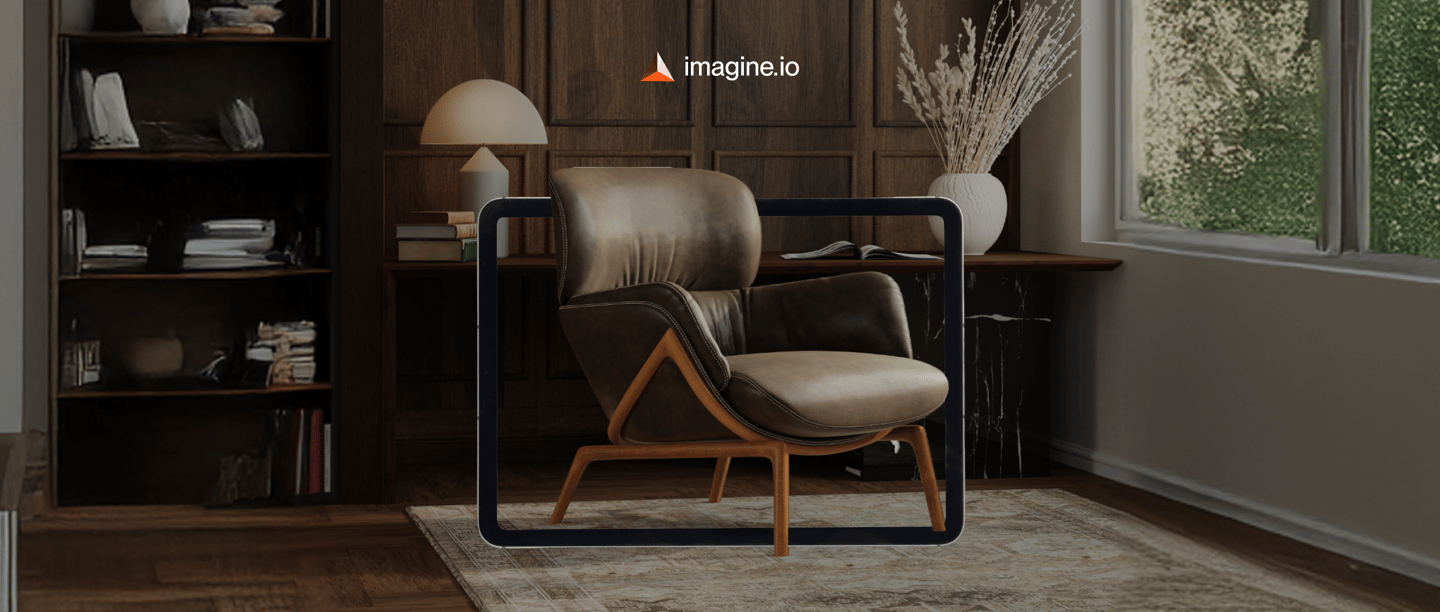

.gif?width=1296&height=1296&name=Untitled%20design%20(8).gif)

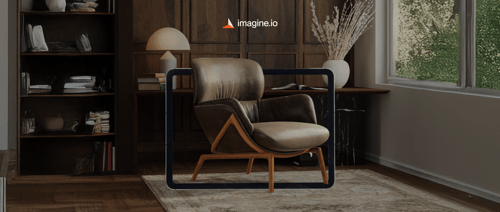
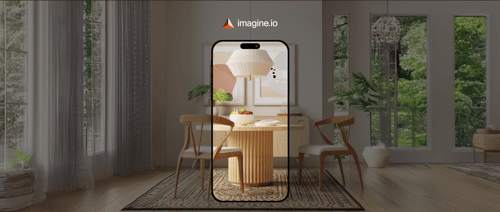












%20(1).png?width=500&name=Why%20Exploded%20Mattress%20Views%20Matter%20(And%20How%20to%20Generate%20Them)%20(1).png)
.png?width=500&name=Best%20Shopify%20Product%20Configurator_%20How%20to%20Choose%20the%20Right%20One%20(2).png)
.png?width=500&name=Why%20Exploded%20Mattress%20Views%20Matter%20(And%20How%20to%20Generate%20Them).png)



.png?width=500&name=Best%20Shopify%20Product%20Configurator_%20How%20to%20Choose%20the%20Right%20One%20(1).png)







.png?width=500&name=How%203D%20Rendering%20Can%20Make%20or%20Break%20Your%20Industrial%20Design%20Pitch%20(1).png)








%20with%20Digital%20Twins%20and%203D%20Visualization.png?width=500&name=Optimizing%20Your%20Digital%20Asset%20Management%20(DAM)%20with%20Digital%20Twins%20and%203D%20Visualization.png)




.png?width=500&name=Styling%20Home%20Decor%20for%202025_%20From%20Global%20Influences%20to%20Playful%20Personalization%20(1).png)


.png?width=500&name=How%20Amazon%20Rufus%20Uses%20Image%20Recognition%20to%20Enhance%20Product%20Discovery%20(1).png)



.png?width=500&name=Euro-style%20case-study%20(1).png)